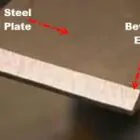Arc welding is a popular method of joining metal components together by using an electric current to create an arc between a consumable electrode and the workpieces. Also, The arc makes heat, which melts the metals and makes it possible to join them together. Flux is a crucial component in arc welding, as it plays several important roles in the welding process.
What is Flux?
Flux is used in arc welding to keep air out of the molten metal weld pool. It helps eliminate impurities from the weld pool, which might weaken the weld joint. You can apply it manually or automatically to the weld junction as a solid, paste, or gas.
Types of Flux
There are several types of it that you can use in arc welding, each with its own unique properties and characteristics. Some of the most common types include:
Active flux: This contains agents that react with the impurities in the weld pool to remove them. You use it mainly in gas metal arc welding (GMAW) and flux-core arc welding (FCAW) processes.
Inert flux: This does not react with the impurities in the weld pool and you can use it to protect the weld from the atmosphere. You can often use it in shielded metal arc welding (SMAW) and tungsten inert gas welding (TIG) processes.
Basic flux: This contains alkaline materials, such as calcium oxide or magnesium oxide, that help to remove impurities from the weld pool. You can often use it in shielded metal arc welding (SMAW) and flux-cored arc welding (FCAW) processes.
Acid flux: This contains acidic materials, such as hydrochloric acid or sulfuric acid, that help to remove impurities from the weld pool. However, you can often use it in shielded metal arc welding (SMAW) and flux-cored arc welding (FCAW) processes.
Functions of Flux in Arc Welding
Flux plays several important roles in the arc welding process. Some of the key functions of are:
Cleaning the weld pool: It helps to remove impurities, such as oxides and other contaminants, from the weld pool. This helps to improve the quality of the weld joint and makes it stronger and more durable.
Protecting the weld pool: It helps to create a protective shield around the weld pool, which helps to protect it from the atmosphere. This prevents the weld pool from reacting with the air, which can cause porosity, cracks, and other defects.
Stabilizing the arc: It can help to stabilize the arc during the welding process, which can improve the consistency and quality of the weld joint.
Enhancing the appearance of the weld: It can give the weld a smooth and uniform appearance, which can be aesthetically pleasing.
Flux improves the wetting action of the weld pool, or the molten metal’s capacity to flow and fill the joint. This can help to create a stronger and more durable weld joint.
Conclusion
In conclusion, flux is an essential component in arc welding that plays several important roles in the welding process. It cleans the weld pool, protects it from the atmosphere, stabilises the arc, improves the weld’s look, and wets the pool.





